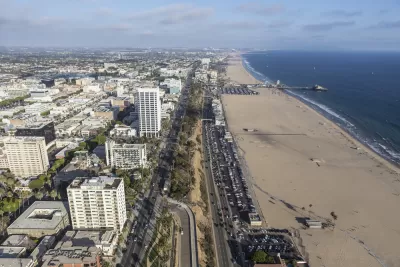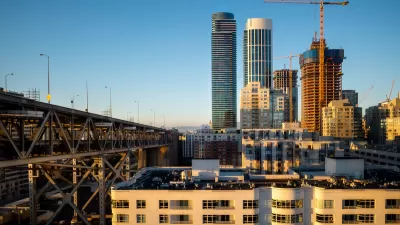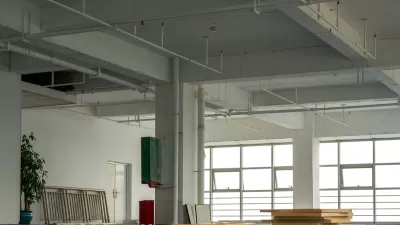In the time that it took Santa Monica to bring its housing plan into compliance with state requirements, a developer filed over a dozen preliminary applications under the obscure ‘builder’s remedy’ policy.

A developer has filed the first full application using the ‘builder’s remedy’ in Santa Monica, months after the little-known legal provision gained attention as an avenue for skirting local zoning regulations in cities that failed to submit appropriate plans under California’s Regional Housing Needs Assessment (RHNA). An article by Trevor Bach in The Real Deal explains the obscure law.
“Under SB 330, a pro-housing state law passed in 2019, developers are able to vest entitlement rights with only a preliminary project application and then file the full application within six months; this year the law emerged as a key factor in Southern California’s surprise surge in builder’s remedy applications, after a state agency affirmed in October that SB 330 also applies to the older provision,” writes Bach.
In its application, WS Communities (WSC) is proposing a 10-story apartment building that would include 20 percent affordable units. The company plans to develop 11 of the 14 preliminary sites they filed applications for in October.
“Earlier this fall, after the revelation of the builder’s remedy applications set off a local frenzy — and prompted hundreds of furious comments and emails from residents — the city began exploring potential legal options to fight the projects, particularly a proposed 15-story, 2,000-unit building on Nebraska Avenue, although experts quickly dismissed one potential strategy floated by the city attorney.”
FULL STORY: WSC files first full builder’s remedy application in Santa Monica

Trump Administration Could Effectively End Housing Voucher Program
Federal officials are eyeing major cuts to the Section 8 program that helps millions of low-income households pay rent.

Planetizen Federal Action Tracker
A weekly monitor of how Trump’s orders and actions are impacting planners and planning in America.

Ken Jennings Launches Transit Web Series
The Jeopardy champ wants you to ride public transit.

Driving Equity and Clean Air: California Invests in Greener School Transportation
California has awarded $500 million to fund 1,000 zero-emission school buses and chargers for educational agencies as part of its effort to reduce pollution, improve student health, and accelerate the transition to clean transportation.

Congress Moves to End Reconnecting Communities and Related Grants
The House Transportation and Infrastructure Committee moved to rescind funding for the Neighborhood Equity and Access program, which funds highway removals, freeway caps, transit projects, pedestrian infrastructure, and more.

From Throughway to Public Space: Taking Back the American Street
How the Covid-19 pandemic taught us new ways to reclaim city streets from cars.
Urban Design for Planners 1: Software Tools
This six-course series explores essential urban design concepts using open source software and equips planners with the tools they need to participate fully in the urban design process.
Planning for Universal Design
Learn the tools for implementing Universal Design in planning regulations.
Heyer Gruel & Associates PA
Ada County Highway District
Institute for Housing and Urban Development Studies (IHS)
City of Grandview
Harvard GSD Executive Education
Toledo-Lucas County Plan Commissions
Salt Lake City
NYU Wagner Graduate School of Public Service





























